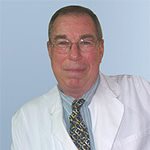מחקר: כיצד עובד מזון מונע סרטן
דיון מתוך פורום טיפולים משלימים בסרטן
Office of Public Affairs (MC 288) 601 S. Morgan St., Chicago IL 60607-7113, (312) 996-3456 www.news.uic.edu July 8, 2005 Contact: Sharon Butler, (312) 355-2522, [email protected] UIC Researchers Show How Cancer-Preventing Foods Work Researchers at the University of Illinois at Chicago are unraveling the biochemical mechanism by which functional foods combat cancer. "Compounds like sulforaphane in broccoli AND resveratrol in wine have been shown to prevent cancer," said Andrew Mesecar, associate professor of pharmaceutical biotechnology in the UIC College of Pharmacy. "They do that by signaling our bodies to ramp up the production of proteins capable of preventing damage to our DNA. "We now have a good idea how that signal works." The findings are published in this week's Early Edition of the Proceedings of the National Academy of Sciences. Two key proteins, Keap1 AND Nrf2, are involved in spurring the defense against cancer when disease-preventing foods are ingested, according to Mesecar AND post-doctoral researcher Aimee Eggler. Keap1, the sensor protein, detects the presence of dietary compounds like sulforaphane when they link with its cysteine residues, one of the amino acids that make up proteins. Keap1 binds to Nrf2, the messenger that turns on the genes for the protective proteins, averting DNA damage. "Earlier studies in mice suggested that natural cancer-preventing compounds worked by severing the tie between Keap1 AND Nrf2, freeing Nrf2 to take action," Mesecar said. "But the signaling doesn't happen this way in humans." The scientists found that in humans the connection between the two proteins is not broken. What's important, the researchers said, is the modification of cysteines in Keap1. They found that one particular cysteine was among the most likely to be altered in the interaction with cancer-preventing compounds. That finding corresponded with results from other researchers. As a result, the scientists are proposing that the alteration of just this one amino acid in Keap1 is the critical step that spurs higher levels of the messenger Nrf2 and, consequently, increased production of the protective proteins. Keap1 is a promising new target for drugs to fight many different kinds of cancer, Mesecar said. The American Cancer Society estimates that there will be over 1.3 million new cases of cancer in 2005, AND roughly half of these individuals will not survive their disease, Mesecar noted. "One way of preventing cancer may be to eat certain foods rich in cancer-preventing compounds. An alternative is identifying how these compounds work AND replicating their modes of action with drugs." Mesecar's AND Eggler's main collaborators in the study were Richard van Breemen, professor of medicinal chemistry AND pharmacognosy in the UIC College of Pharmacy, AND Guowen Liu, a graduate student at UIC. John Pezzuto, professor of medicinal chemistry AND molecular pharmacology at Purdue University, is also an author of the study. The research was funded by the National Cancer Institute. For more information about the UIC College of Pharmacy, visit www.uic.edu/pharmacy/. UIC ranks among the nation's top 50 universities in federal research funding AND is Chicago's largest university with 25,000 students, 12,000 faculty AND staff, 15 colleges AND the state's major public medical center. A hallmark of the campus is the Great Cities Commitment, through which UIC faculty, students AND staff engage with community, corporate, foundation AND government partners in hundreds of programs to improve the quality of life in metropolitan areas around the world. Copyright ©2005, The Board of Trustees of the University of Illinois.
חוקרים מאוניברסיטת אילינוי בשיקגו מסבירים את המכאניזם הביוכימי שבו מנצח מזון פונקציונלי את הסרטן. "תרכובות כמו סולפורפן בברוקולי ורסברטול ביין נמצאו כמונעים סרטן" אמר אנדרו מסקר, פרופסור חבר בביוטכנולוגיה תרופתית בקולג' לרוקחות באוניברסיטה. "הן עושות זאת על ידי איתות לגוף שלנו להגביר ייצור חלבונים שיכולים למנוע נזק לדנ"א. עכשיו יש לנו מושג איך האיתות הזה עובד". הממצאים פורסמו במהדורה המוקדמת של- Proceedings of the National Academy of Sciences שני חלבוני המפתח Keap1 ו- Nrf2, מעורבים בזירוז ההגנה נגד סרטן כאשר בולעים מזון שמונע מחלות. החלבון הראשון, חלבון חיישן, מאתר את הנוכחות של תרכובות כמו הסולפורפן בברוקולי, כאשר הן מתקשרות עם שאריות ציסטאין (אחת מחומצות האמינו שמרכיבות חלבונים). החלבון החיישן נקשר לחלבון השני, השליח שמפעיל את הגנים לחלבונים מגינים, וכך מונעים נזק לדנ"א. "מחקרים מוקדמים בעכברים הראו שתרכובות טבעיות המונעות סרטן, עובדות על ידי ניתוק הקשר בין שני החלבונים (החיישן והשליח), ושחרור השליח לפעול. אבל האיתות לא קורה בצורה זו בבני אדם". המדענים מצאו שבבני אדם הקשר בין החלבונים לא נשבר. מה שחשוב הוא השינוי של הציסטאינים בחלבון החיישן. הם מצאו שציסטאין ספציפי היה מבעלי הסבירות הגבוהה ביותר להשתנות באינטראקציה עם התרכובות מונעות הסרטן. הממצאים מתאימים לתוצאות מחקרים אחרים. כתוצאה מכך, המדענים מציעים שהשינוי של חומצת אמינו זו בחלבון החיישן, הוא הצעד הקריטי שמזרז רמות גבוהות יותר של החלבון השליח, וכתוצאה מכך (מזרז) ייצור מוגבר של החלבונים המגינים. החלבון החיישן הוא מטרה מבטיחה לתרופות נגד סוגים רבים של סרטן, מסקר אמר. האגודה לסרטן מעריכה שיהיו 1.3 מיליון מקרים חדשים של סרטן ב- 2005 וכחצי מהם לא ישרדו את המחלה, מסקר העיר. "דרך אחת למנוע סרטן יכולה להיות אכילת מזונות עשירים בתרכובות מונעות סרטן. אלטרנטיבה היא לזהות איך התרכובות הללו עובדות ולחזור על צורת הפעולה שלהן עם תרופות". המחקר מומן על ידי המוסד הלאומי לסרטן.

